Specification
| Item | Specification |
| Rated voltage (V) | 12 - 14 |
| Operating voltage (V) | 6 - 18 |
| Operating temperature [°C (°F)] | -40 to 105 (-40 to 221) |
| Parasitic current (uA) | Maximum 300 |
Description
The battery sensor is installed in the auxiliary 12 V battery negative ( - ) terminal and detects the voltage change supplied to the actuator and detects the auxiliary 12 V battery output and input current.
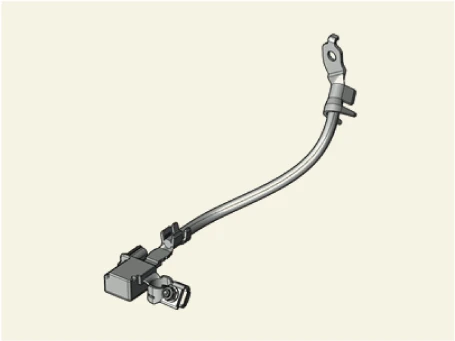
Component
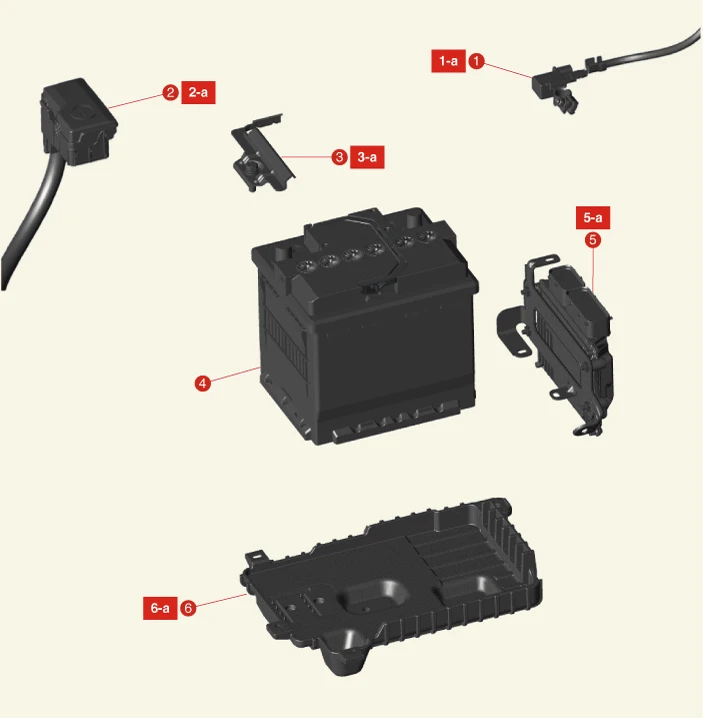
1. Auxiliary 12 V Battery Negative ( - ) Cable
1-a. 7.8 - 9.8 N·m (0.8 - 1.0 kgf·m, 5.8 - 7.2 lb·ft)
2. Auxiliary 12 V Battery Positive ( + ) Cable
2-a. 7.8 - 9.8 N·m (0.8 - 1.0 kgf·m, 5.8 - 7.2 lb·ft)
3. Battery Clamp
3-a. 9.8 - 13.7 N·m (1.0 - 1.4 kgf·m, 7.2 - 10.1 lb·ft)
4. Auxiliary 12 V Battery
5. Vehicle Control Unit (VCU)
5-a. 9.8 - 11.8 N·m (1.0 - 1.2 kgf·m, 7.2 - 8.7 lb·ft)
6. Battery Tray
6-a. 9.8 - 13.7 N·m (1.0 - 1.4 kgf·m, 7.2 - 10.1 lb·ft)
Removal

• When working on high voltage system, the work should be performed by technicians who have completed the relevant training. A lack of understanding of the high voltage system can lead to serious accidents due to electric shock or electric leakage.
• When working on high voltage system or related components, make sure that you are familiar and comply with the "Safety Precautions, Cautions and Warnings." If you do not comply with the instructions, serious accidents due to electric shock or leakage may occur.
• When working on high voltage system, make sure to check the Personal Protective Equipment (PPE) and high voltage shut-off procedures.
1.Disconnect the service interlock connector (A).
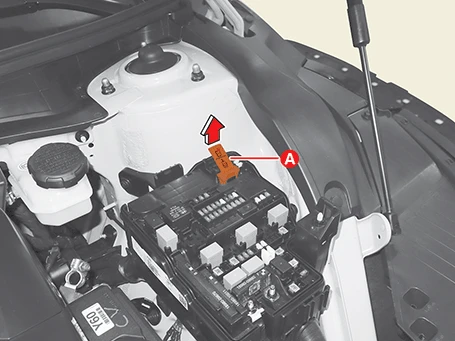


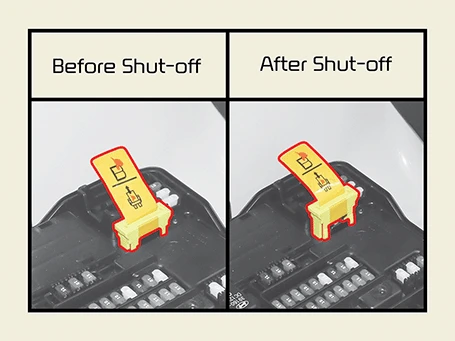
2.Remove the front trunk.(Refer to Body - "Front Trunk")
3.Disconnect the auxiliary 12 V battery negative ( - ) terminal (A).
Tightening torque :7.8 - 9.8 N·m (0.8 - 1.0 kgf·m, 5.8 - 7.2 lb·ft)
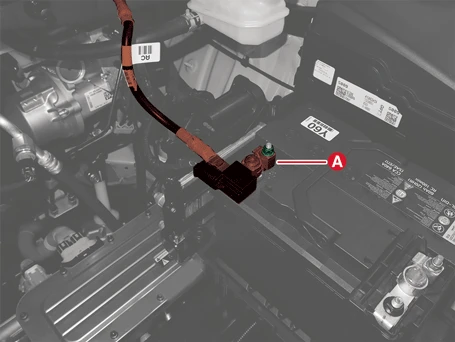
4.Disconnect the battery sensor connector (A).
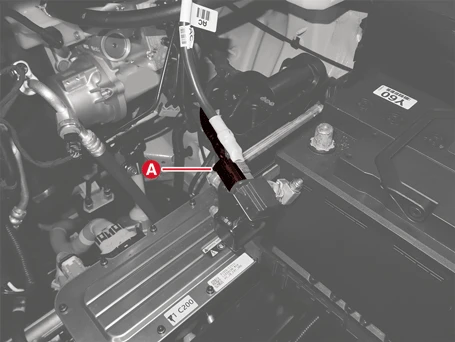
5.Remove the battery sensor (A) after removing the bolt.
Tightening torque :26.5 - 32.4 N·m (2.7 - 3.3 kgf·m, 19.5 - 23.9 lb·ft)
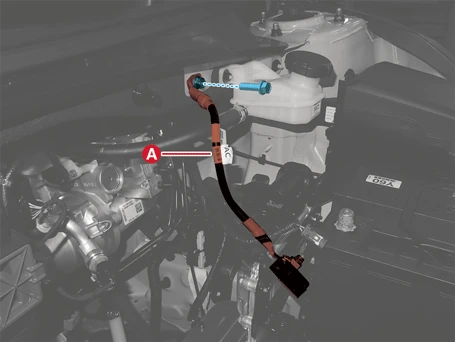
Installation

• When working on high voltage system, the work should be performed by technicians who have completed the relevant training. A lack of understanding of the high voltage system can lead to serious accidents due to electric shock or electric leakage.
• When working on high voltage system or related components, make sure that you are familiar and comply with the "Safety Precautions, Cautions and Warnings." If you do not comply with the instructions, serious accidents due to electric shock or leakage may occur.
• When working on high voltage system, make sure to check the Personal Protective Equipment (PPE) and high voltage shut-off procedures.
1.Install in the reverse order of removal.

• Install the battery sensor to the specified torque.
• If the battery sensor is dropped, it may cause internal damage. (Do not reuse)
Removal

• When working on high voltage system, the work should be performed by technicians who have completed the relevant training. A lack of understanding of the high voltage system can lead to serious accidents due to electric shock or electric leakage.
• When working on high voltage system or related components, make sure that you are familiar and comply with the "Safety Precautions, Cautions and Warnings." If you do not comply with the instructions, serious accidents due to electric shock or leakage may occur.
• When working on high voltage system, make sure to check the Personal Protective Equipment (PPE) and high voltage shut-off procedures.
1.Disconnect the service interlock connector (A).
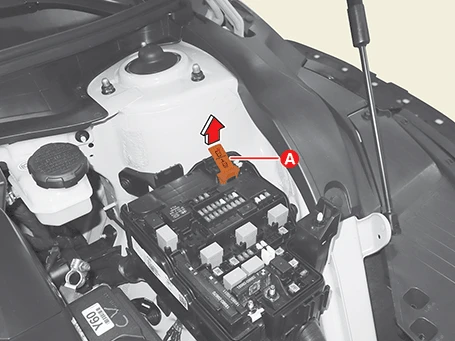


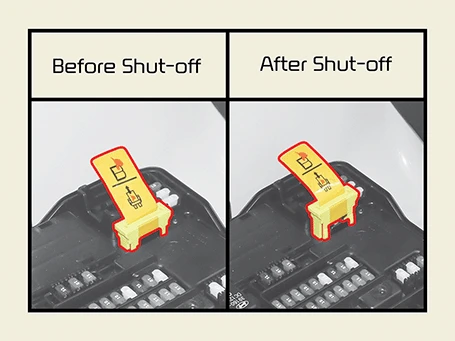
2.Remove the front trunk.(Refer to Body - "Front Trunk")
3.Disconnect the auxiliary 12 V battery negative ( - ) terminal (A).
Tightening torque :7.8 - 9.8 N·m (0.8 - 1.0 kgf·m, 5.8 - 7.2 lb·ft)
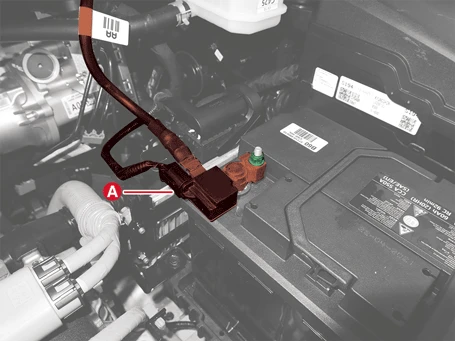
4.Disconnect the battery sensor connector (A).
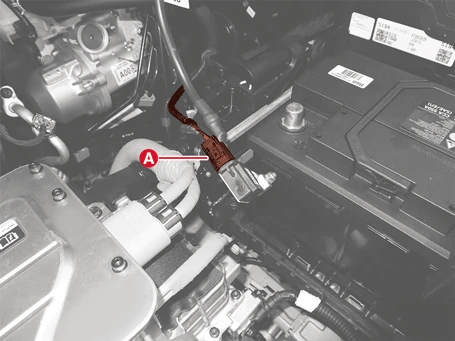
5.Remove the battery sensor (A) after removing the bolt.
Tightening torque :26.5 - 32.4 N·m (2.7 - 3.3 kgf·m, 19.5 - 23.9 lb·ft)
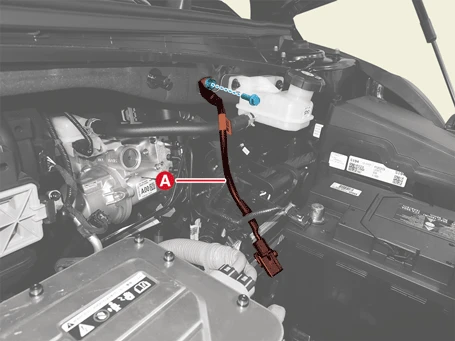
Installation

• When working on high voltage system, the work should be performed by technicians who have completed the relevant training. A lack of understanding of the high voltage system can lead to serious accidents due to electric shock or electric leakage.
• When working on high voltage system or related components, make sure that you are familiar and comply with the "Safety Precautions, Cautions and Warnings." If you do not comply with the instructions, serious accidents due to electric shock or leakage may occur.
• When working on high voltage system, make sure to check the Personal Protective Equipment (PPE) and high voltage shut-off procedures.
1.Install in the reverse order of removal.

• Install the battery sensor to the specified torque.
• If the battery sensor is dropped, it may cause internal damage. (Do not reuse)